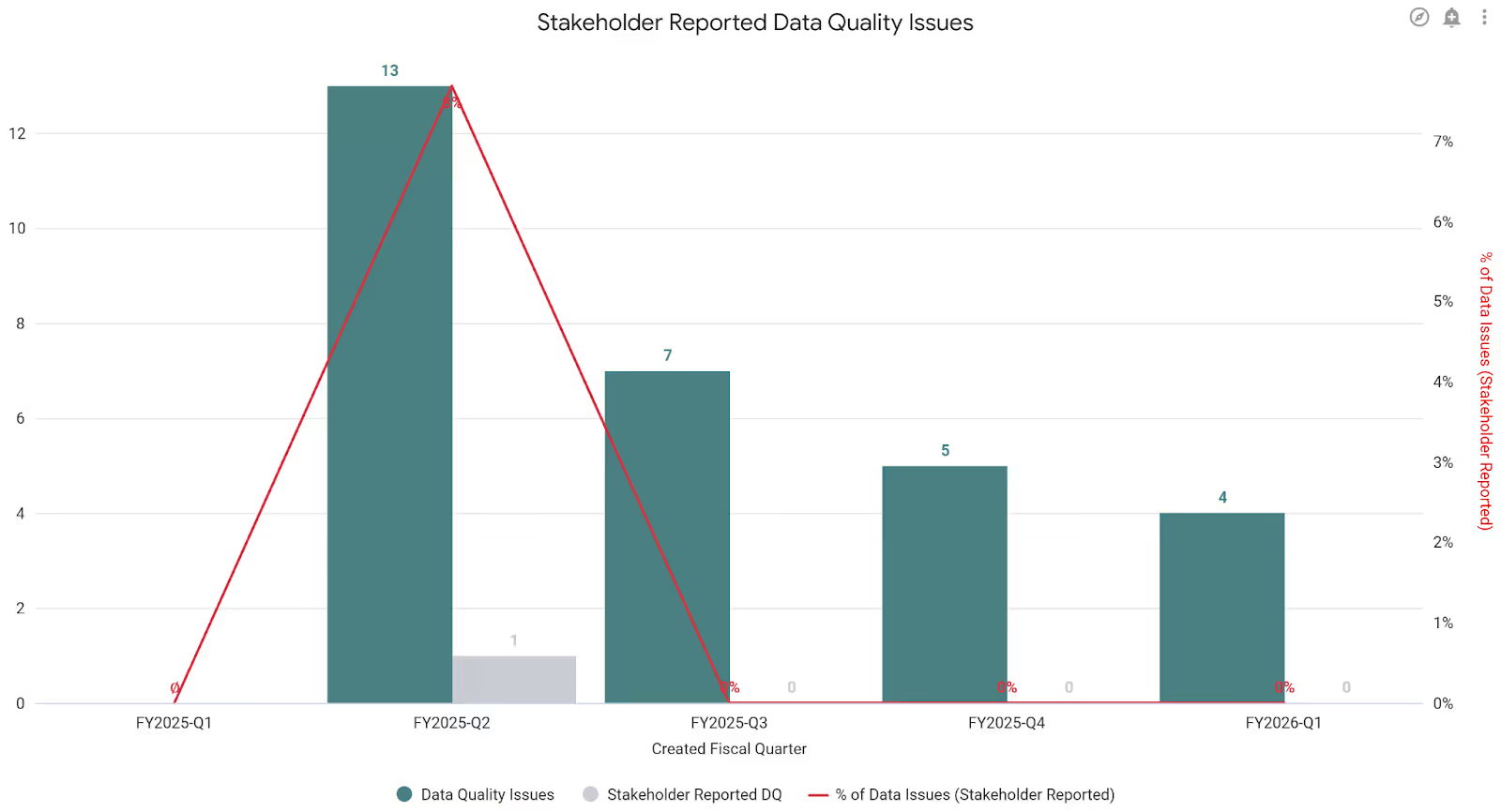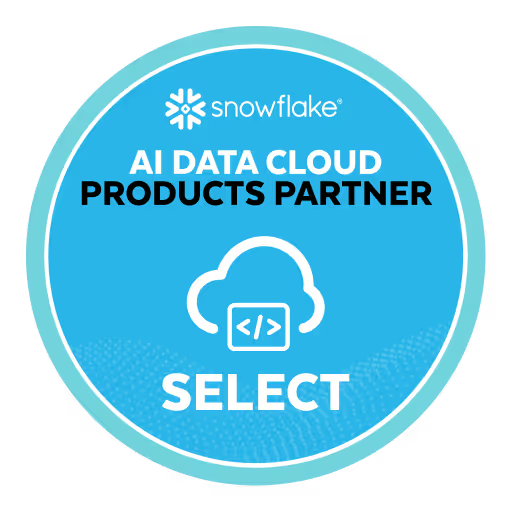If you've ever opened your cloud billing dashboard only to be hit with unexpected spikes, you're not alone. As data volumes grow and workloads scale across Snowflake, Redshift, BigQuery, and Databricks, managing cloud cost have quietly become one of the toughest challenges for modern FinOps teams. In fact, 84% of organizations face the same struggle.
The flexibility and scalability of cloud data platforms are undeniably powerful, but they come with hidden costs that often reveal themselves too late.
Idle compute, oversized clusters, untracked queries, and disconnected teams can turn cost control into a never-ending game of catch-up.
Today, optimizing cloud expenses is about finding the balance between performance, accountability, and efficiency at scale. That’s where AI-powered solutions are helping teams not only track costs but understand, predict, and prevent waste before it happens.
The Need for Controlling Costs of Cloud Data Platforms
Cloud data warehouses offer high performance and scalability, but they also introduce usage-based pricing that can quickly spiral if left unchecked. According to Forbes, over 30% of cloud expenditure is wasted due to underutilized resources, unoptimized queries, and a lack of visibility.
As data teams scale workloads across multiple platforms, the challenge is in spending smart (along with spending less). This means:
- Identifying inefficiencies across data workloads
- Holding teams accountable through real-time reporting
- Creating a balance between innovation and governance
- Ensuring cost predictability in multi-cloud environments
Cloud cost visibility alone isn't enough. Optimization demands actionable insights and continuous monitoring that go beyond static dashboards.
Issues with Traditional Cost Monitoring
Most traditional cost monitoring tools weren’t built for the way modern data teams work. They show you how much you're spending, but they don’t give the complete picture or help teams act quickly.
As a result, many teams end up reacting to cost spikes after the fact instead of staying ahead of them.
Delayed cost data:
Cost information often comes with a delay, sometimes hours or even days. That means by the time a problem is spotted, money has already been spent, and it’s too late to fix it in real time.
One-size-fits-all suggestions:
Many tools give basic advice like “reduce usage” or “shut down idle resources,” but they don’t take into account how your systems actually run. Without understanding the context of your workloads, these suggestions are often unhelpful or ignored.
No clear ownership:
Finance teams usually monitor costs, but engineers and analysts are the ones using the platforms. If they don’t see how their work affects the bill, or don’t get timely feedback, they can’t make informed decisions. This lack of shared visibility makes it hard to hold the right teams accountable.
Each platform is treated separately:
When using multiple platforms like Snowflake, Redshift, BigQuery, and Databricks, many tools don’t offer a unified view. This forces teams to manage each one separately, creating more work and making it harder to spot patterns or optimize across the board.
Too reactive:
Instead of helping teams prevent waste, most tools just show you what went wrong after it’s already happened. That leaves FinOps teams constantly putting out fires rather than building long-term cost strategies.
To truly manage cloud costs, teams need tools that give real-time insights, understand how their systems are used, and support collaboration between finance and engineering. Traditional monitoring simply doesn’t go far enough.
How Can AI Augment the CSO Process?
AI plays a pivotal role in elevating cost optimization from reactive monitoring to proactive intelligence. When integrated correctly, AI can:
- Detect anomalies in real-time: Spotting cost spikes as they happen and alerting relevant teams.
- Surface optimization opportunities: Recommending right-sizing, query tuning, and storage clean-up based on usage patterns.
- Automate repetitive tasks: Identify idle clusters, unused data, or stale tables without manual audits.
- Enable dynamic governance: Aligning budget controls with evolving workloads using predictive modeling.
This transforms FinOps into a continuous, automated, and collaborative process, where engineers, analysts, and finance teams all operate with shared visibility and accountability.
How to Optimize Cloud Costs Across the Big 4 Cloud Data Warehouses
While every cloud data platform offers scalability and performance, they also come with their own cost pitfalls.
FinOps teams need to understand the unique behaviors, billing models, and common inefficiencies of each to implement effective, platform-specific optimization strategies.
Here's a breakdown of the key challenges and best practices across Snowflake, Redshift, BigQuery, and Databricks.
Snowflake
Challenges
Snowflake’s usage-based pricing offers flexibility, but it can become expensive without active monitoring. Since charges are tied to compute time, teams often face:
- Over-provisioned warehouses: Teams may opt for larger warehouse sizes "just to be safe," leading to higher costs than necessary.
- Forgotten or unused clusters: Temporary compute resources, if not shut down properly, continue to accumulate charges.
- Lack of query-level cost visibility: Without visibility into which queries are expensive, it’s difficult to optimize usage.
- Data sharing inefficiencies: Cross-team data access can cause redundant workloads if not structured efficiently.
How Cribl Optimized Snowflake with Revefi
Cribl, a data observability company, was struggling with a lack of visibility into Snowflake usage and data quality issues that slowed down decision-making.
By implementing Revefi, they gained real-time insights into their workloads, optimized costs by identifying unused compute, and improved data operations quality without disrupting performance.
Result? Greater operational clarity, faster decisions, and measurable cost savings on Snowflake.

Best Practices
- Enable auto-suspend and auto-resume: Helps prevent unnecessary compute charges when warehouses sit idle.
- Right-size compute resources: Regularly assess performance needs and scale warehouse sizes based on usage patterns, not guesswork.
- Use query profiling tools: Understand which queries consume the most resources and refine them to reduce costs.
- Tag workloads and resources: Team-level tagging ensures clearer cost attribution, making it easier to identify and address inefficient usage.
AWS Redshift
Challenges
Redshift’s pricing model is more complex, combining reserved instances, on-demand pricing, concurrency scaling, and storage costs. Teams often encounter:
- Poor sort keys and distribution styles: These can slow down queries and require more compute resources.
- Inefficient compression encodings: Suboptimal storage formats lead to larger data sizes and higher scan costs.
- Underutilized reserved instances: If not correctly managed, reserved capacity may go unused.
- Expensive concurrency scaling: Automatically scaling compute to handle bursts can become costly if not monitored.
Best Practices
- Use Redshift Advisor: Leverage built-in insights for tuning sort keys, compression, and workload distribution.
- Implement Workload Management (WLM): Control how different workloads consume resources to avoid overuse by low-priority jobs.
- Track usage with CloudWatch: Set alerts to flag sudden changes in cost patterns or resource utilization.
- Optimize table design: Regularly review data distribution and compression settings to improve efficiency.
Google BigQuery
Challenges
BigQuery uses a per-query, data-scanned billing model, which makes inefficient queries particularly expensive. Common issues include:
- Full-table scans: Queries that don’t filter or use partitions scan large datasets unnecessarily.
- Uncached exploratory queries: Running repeated ad-hoc queries without using caching or materialized views.
- No data lifecycle management: Storing old or unused data indefinitely adds unnecessary long-term costs.
Best Practices
- Use partitioning and clustering: These help minimize data scanned, especially in large tables.
- Monitor with INFORMATION_SCHEMA: Use built-in views to audit query patterns and detect outliers.
- Use materialized views and BI Engine: Improve performance and reduce query costs for dashboards and recurring analyses.
- Set query cost limits: Establish safeguards for users running large-scale, experimental queries.
Databricks
Challenges
Databricks blends collaborative development and data processing on top of cloud compute, which can lead to invisible waste if not tracked:
- Idle clusters consuming resources: Shared clusters are often left running unintentionally.
- Lack of standard policies: Without governance, teams use compute resources inconsistently, leading to unpredictable expenses.
- Poor cost attribution: Without clear tracking, it’s hard to know which teams, notebooks, or jobs are driving costs.
Best Practices
- Use cluster auto-termination: Automatically shut down clusters after a set period of inactivity.
- Define cluster policies: Limit access to larger or more expensive compute types and encourage standard configurations.
- Apply cost tracking tags: Use tags to break down costs by user, notebook, project, or team.
- Analyze workspace usage: Review jobs, notebooks, and cluster logs to identify inefficiencies and eliminate waste.
Revefi’s AI Agent for DataOps & FinOps Optimization
Traditional tools surface metrics. Revefi’s AI Agent goes further. It acts as an autonomous system that continuously analyzes, recommends, and supports cost and data optimization across platforms like Snowflake, Redshift, BigQuery, and Databricks.
Unlike dashboard-only tools or manual tagging systems, Revefi’s AI Agent is built for the speed and scale of modern FinOps and DataOps.
Key capabilities include:
- Autonomous Monitoring: Tracks compute, storage, and query patterns in real time without manual setup
- Contextual Recommendations: Uses AI to suggest right-sizing, query tuning, and cluster cleanup based on real workload behavior
- Cross-Platform Intelligence: Connects cost and performance insights across warehouses in a single view
Built-in Accountability Layer: Highlights usage by team, project, or user to support ownership and budgeting decisions - Dynamic Alerts and Actions: Continuously adapts to your environment and flags anomalies or waste before it becomes expensive
By combining observability with intelligent automation, Revefi’s AI Agent helps teams shift from reactive firefighting to proactive optimization, without adding workflow complexity.
Key Takeaways for Cloud Cost Optimization
- Each platform has its own cost traps. Snowflake can suffer from idle warehouses, Redshift from inefficient workload management, BigQuery from unfiltered queries, and Databricks from uncontrolled cluster usage. Knowing what to watch out for is the first step.
- One-size-fits-all solutions don’t work. Optimization must be tailored to your workloads, team structure, and platform-specific behaviors. What works for BigQuery won’t necessarily apply to Redshift.
- Operational alignment is as important as technical fixes. Without tagging, cost attribution, and team accountability, even the best optimization practices won’t scale.
- AI can help move faster. Traditional tools focus on dashboards and alerts, while AI-powered platforms like Revefi go beyond by offering real-time insights, workload-aware suggestions, and cross-platform visibility.
- Choosing the right tool matters. Look for platforms that:
- Integrate with all major data warehouses you use
- Provide actionable insights (not just reports)
- Support team-level accountability
- Offer automation to reduce manual effort
In short: Optimize with intent, track with clarity, and align your teams with tools that drive action.
Not sure where to start? Revefi helps FinOps and data teams go beyond visibility with real-time, AI-powered optimization across Snowflake, Redshift, BigQuery, and Databricks.
Book a demo to see how Revefi makes cloud cost management smarter and simpler.










